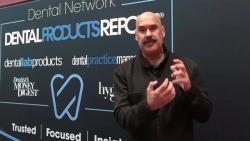- About Us
- Advertise
- Editorial
- Contact Us
- Terms and Conditions
- Privacy Policy
- Do Not Sell My Personal Information
© 2025 MJH Life Sciences™ and Dental Products Report. All rights reserved.
Dental Implants: The role they play in patients' health and happiness
As dental implants continue to grow in popularity and usage, it’s important to take a step back and look at the importance of education and trust.
As dental implants continue to grow in popularity and usage, it’s important to take a step back and look at the importance of education and trust.
Dr. Judy, co-chairman of the ICOI, explains how education and a team approach are critical when it comes to implants.
Oral implantology/implant dentistry is a growth area in many aspects worldwide. In the continuum of dental implant care, there are several different players in the field and they all have responsibilities. Sometimes there is an overlap but quite often there is not.
For instance, in the United States, devices and/or materials that are inserted into patients’ bodies should be shown to be effective and delivered to practitioners in a sterile manner. We rely on the Food and Drug Administration (FDA) for appropriate protection in this regard.
Injectables such as antibiotics, local and general anesthetics, bone morphogenic proteins, bone substitute materials, as well as a plethora of endosteal implants made from different materials and of different designs all must be FDA-approved.
A growing segment of dentistry
At the same time that FDA processes were being developed, the general public was becoming aware of the potential, well-advertised benefits of implants.
Today, patients are requesting their dentists to help them with implants. A general understanding of the multiple responsibilities of the various players mentioned above is an appropriate exercise.
As far as Dental Products Report is concerned, I personally feel the publication serves to help dentists understand all of the different implants, implantable materials, instruments, x-ray machines, etc., that are necessary for safe implant placement, restoration and maintenance.
What is obvious is that with the across the board professional acceptance of implants, now a concept promoted by the American Dental Association (ADA), almost all of the disciplines of dentistry have become involved. Therefore, an inclusive range of dental products is needed.
These products also must be updated and constantly improved. Obviously the commercial success of various products is what is needed to command significant advertising space.
The importance of implant societies
What about implant societies? What are their responsibilities? First and foremost, they must endeavor to educate and to tell us the truth. To pretend implantology began in North America in 1982 is just not true and does not serve the profession.
The FDA already had held a Consensus Conference in 1978 and I personally have been placing screw and blade form implants since 1970. Subperiosteal implants were developed in the mid to late 1950s. A number of implants, which were touted as successful and superior to others, with purported strong scientific backing, simply failed.
A brief appearance in DPR might have occurred, but the situation was self-correcting. However, someone had fooled the FDA first.
Secondly, implant societies are obligated, in my opinion, to teach all members of the dental team. Therefore, the International Congress of Oral Implantologists (ICOI), for example, has an auxiliary division for dental hygienists and dental assistants, a component that focuses on laboratory technicians, as well as an omnibus society that addresses the needs of generalists and specialists of all disciplines of dentistry.
We also have members in more than 100 countries and relationships with multiple national implant societies. While this is not a necessity for a well-functioning implant society, especially because of the expenses involved, it is nonetheless an ideal situation. I feel implant societies should behave fraternally, i.e. they should relate to each other and cooperate with each other for the common good.
Further, they should support research and education and recognize the professional achievements of their members. As much as possible implant societies also should provide certain benefits for their membership at no cost, such as implant glossaries, webinars, generic video clips for educating patients on members’ websites, etc.
The costs of major seminars and new initiatives of any type, especially with an economy as challenging as it is, should be well cost-controlled to encourage participation.
Implant societies also should have outreach programs for researchers, academicians, and even the military. They should support international dental societies such as the Federation Dentaire International (FDI) to promote the unity of our profession and constant interchange of ideas.
Research and education
There are three other activities that can be combined. First, ICOI has had an extremely active Research and Education Foundation, which has contributed several million dollars to various grant and educational projects over the years.
Second, using its extensive connections with academic and world-class clinicians, the ICOI over many years has sponsored several Consensus Conferences to address curriculum guidelines or special areas of interest in oral implantology/implant dentistry.
Again, we were inspired by the FDA, which held two (almost unheard of) Consensus Conferences relating to our field in 1978 and 1988.
How have times changed?
In 1988, we dealt with “Osseointegration in Oral Implantology.” In 1990, our Consensus Conference was on “Pre-doctoral Implant Education.” In 1991, we addressed “Implant Education in General Practice Residency/Advanced Education in General Dentistry Programs.” In 1995, ICOI ’s Consensus Program was “Oral Implantology/Implant Dentistry for Dental Hygiene Education and Continuing Education for Practicing Dental Hygienists.”
In 2002, it was “Vertical Dimension of Occlusion relating to Implants.” In 2005, it was “Crown-height Space Guidelines for Implant Dentistry.” Our Consensus Conference in 2008 dealt with “Implant Success, Survival and Failure.”
Our most recent Consensus Conference was in 2012 and dealt with the “Use of Cone Beam Computer Tomography in Implant Dentistry.” The titles illustrate how technology and thinking has changed.
The role of dental schools
What is the role of dental schools and how do implant societies relate to them? Relatively recently, the ADA mandated that the specialty programs for periodontics, prosthodontics, and oral and maxillofacial surgery teach oral implantology/implant dentistry to the educational level of competence.
To correctly staff their departments and continuing education programs, many schools needed the assistance of practicing “implantologists.” Individual and society sponsored clinicians rose to the challenge and now this is no longer a problem. However, in many countries that are not as advanced as the United States, implant societies have to try and fill the void in many respected faculties.
Again a constant problem is cost. Not many schools can afford long distance teaching missions, so all countries could achieve equality. This situation is slowly changing around the world, because more people, even in poor countries, are seeking the benefits of implants.
Dental schools should be taking advantage of outside electronic media as well as creating their own. They should be forming large in-depth faculties to meet the needs of their students and alumni.
Implant manufacturers
What is the responsibility of implant manufacturers?
It is to develop quality, FDA-approved products and to tell the truth about them in advertising. Unfortunately we exist in a competitive economic world. We have more than 100 implant companies worldwide with substantive product lines. Each year some “reputable” implant does not live up to its company’s claims.
Patients are hurt, practitioners are hurt, and lawsuits are generated. The answer is quite simple. We must have verified scientific data to present to the FDA or its analogues in other countries and honest advertising principles.
Very often, the implant component of a restoration will only be 10-20% of the total cost to a patient. However, if there is an implant failure, it could be financially catastrophic. The responsibility of our manufacturers is critical.
Your role
Individual practitioners or group practices have extremely personal responsibilities. Advertising and placing implants today puts practitioners on the cutting edge or in a leadership position.
Each practitioner should develop an inherent self-worth to his or her in-office colleagues and regional colleagues and/or referring dentists.
Many should find the confidence and material to join regional, national, or international lecture circuits. ICOI ’s table clinic and poster presentations are a great way to “test the waters” in this regard. The dental office auxiliary team should realize they are also “cutting edge” and should strive to be the “best they can be.”
All of this self-worth and leadership should also benefit two other groups, i.e. local communities and team members’ families including, of course, dentists’ families themselves. It should occur to all of us involved in this dynamic field that our need for education and growth on many different levels is unlimited.
Not only do we place and/or restore and maintain implants, but we should or can have a special place in the expanding world of dentistry.
I feel honored to make this commentary. For more information about the ICOI, please go to ICOI .org.
Dr. Judy or his immediate family has no commercial interest in any dental product.



